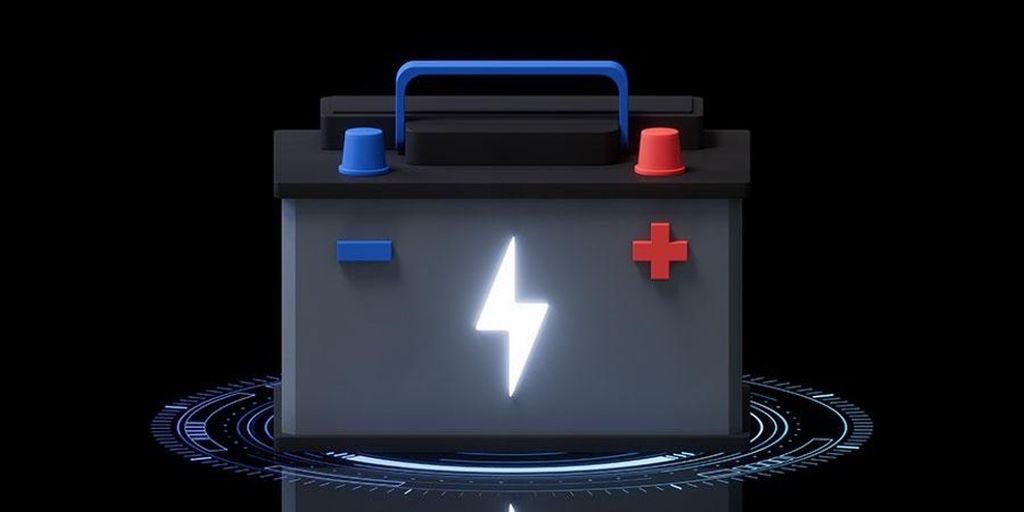In the rapidly evolving landscape of modern technology, LiFePO₄ (Lithium Iron Phosphate) batteries have emerged as a reliable and sustainable power source for various applications, from electric vehicles to renewable energy storage.
Their durability and efficiency have made them increasingly popular. However, proper maintenance is essential to maximize these advanced batteries’ potential fully. In this article, we will delve into the world of LiFePO₄ batteries and explore the key factors that influence their lifespan.
By following our expert tips, you can ensure your LiFePO₄ batteries remain efficient and enjoy a longer life.
Understanding LiFePO₄ Batteries
Advancements in Battery Chemistry
LiFePO₄ batteries, a type of lithium-ion battery, have gained prominence due to their unique chemistry. Unlike traditional lithium-ion batteries, which use cobalt-based cathodes, LiFePO₄ batteries employ iron phosphate.
This chemistry provides several advantages, such as enhanced thermal stability, improved safety, and longer cycle life. These attributes make LiFePO₄ batteries an attractive choice for a wide range of applications. For more in-depth information and expert advice on LiFePO₄ batteries, check out the Goldenmate’s post.
Applications of LiFePO₄ Batteries
LiFePO₄ batteries find application in various industries. They power electric vehicles, store renewable energy from solar panels and wind turbines, and serve as backup power sources for homes and businesses.
Their ability to deliver high energy density and maintain stable performance over time makes them ideal for demanding tasks.
Factors Affecting Battery Life
Temperature Considerations
One of the critical factors that can impact the lifespan of LiFePO₄ batteries is temperature. Extreme temperatures, whether too hot or too cold, can lead to premature aging and reduced capacity.
To maximize battery life, storing and operating LiFePO₄ batteries within their recommended temperature range is essential.
Depth of Discharge (DoD) and Its Impact
The depth to which you discharge a LiFePO₄ battery during use affects its overall lifespan. Shallow discharges (i.e., not fully depleting the battery) are less stressful on the battery and contribute to longer cycle life.
Avoid deep discharges whenever possible, and set appropriate low-voltage cutoffs in your devices to prevent over-discharging.

Charging and Discharging Rates
Charging and discharging rates play a crucial role in battery performance. High discharge rates can generate heat and reduce the battery’s lifespan. Conversely, slower discharge rates are gentler on the battery and promote longevity.
When charging LiFePO₄ batteries, it’s essential to use chargers specifically designed for them, as these chargers ensure the correct voltage and current levels.
Frequency of Use
The frequency with which you use your LiFePO₄ batteries can impact their lifespan. Batteries left unused for extended periods can experience capacity loss or even become unusable.
For long-term storage, maintaining an appropriate state of charge (SoC) is vital to prevent damage.
Tips for Prolonging LiFePO₄ Battery Life
Proper Storage Techniques
To ensure your LiFePO₄ batteries maintain their optimal performance, store them in a cool, dry place within their recommended temperature range.
Avoid exposing them to extreme temperatures, as this can lead to thermal runaway and potential safety hazards. If you plan to store batteries for an extended period, maintain the correct SoC to prevent capacity loss.
Optimal Charging Practices
When it comes to charging LiFePO₄ batteries, using the right charger is crucial. LiFePO₄-compatible chargers are designed to provide the correct voltage and current levels, preventing overcharging and ensuring safe charging.
Always follow the manufacturer’s recommendations for charging your batteries.
Monitoring and Maintenance
Regularly monitoring the voltage of your LiFePO₄ batteries is a proactive approach to maintaining their health. Monitor the state of charge and voltage levels to detect any irregularities or potential issues.
Additionally, clean and inspect battery terminals to ensure good electrical connections.
Avoiding Deep Discharges
As mentioned earlier, deep discharges can stress LiFePO₄ batteries and shorten their lifespan. Set appropriate low-voltage cutoffs in your devices to prevent the battery from discharging too deeply during use. Monitoring the battery voltage during operation can also help you avoid excessive discharge.
Using the Right Equipment
Choosing the correct LiFePO₄ battery for your application is crucial. Batteries should be appropriately sized for the devices or systems they power, ensuring they are not overtaxed. Properly sized battery banks in renewable energy systems can help distribute the load evenly and extend battery life.
Proper Disposal and Recycling
When your LiFePO₄ batteries reach the end of their life cycle, it’s essential to dispose of them properly. Recycling centers often accept lithium-ion batteries for recycling, which helps reduce environmental impact and recover valuable materials.
Common LiFePO₄ Battery Myths
In the world of batteries, myths and misconceptions abound. Let’s debunk some common myths associated with LiFePO₄ batteries to ensure you have accurate information when maintaining them.
Myth #1: LiFePO₄ batteries don’t require maintenance.
Debunking: While LiFePO₄ batteries are more robust than some other battery types, proper maintenance can still prolong their life and ensure optimal performance.
Myth #2: LiFePO₄ batteries don’t need to be charged regularly.
Debunking: LiFePO₄ batteries, like all batteries, should be charged regularly to maintain their state of charge and prevent capacity loss during extended storage.
Myth #3: Overcharging a LiFePO₄ battery is impossible.
Debunking: While LiFePO₄ batteries are less prone to overcharge than some other lithium-ion batteries, it is still possible to overcharge them, leading to reduced performance and safety concerns.
Troubleshooting and Problem-Solving
Even with proper maintenance, LiFePO₄ batteries can sometimes experience issues. Here are some common signs of battery degradation and steps to take when facing problems:
Identifying Signs of Battery Degradation
- Reduced capacity and runtime
- Increased heat during charging or discharging
- Rapid voltage drop during use
- Swelling or deformation of the battery pack
Steps to Take When Battery Performance Declines
- Check the battery voltage and state of charge.
- Review your charging and discharging practices for any anomalies.
- Inspect the battery for physical damage or signs of swelling.
- If issues persist, seek professional help or consider battery replacement.
Conclusion
In a world where LiFePO₄ batteries are becoming the norm for various applications, understanding how to maintain and prolong their lifespan is vital. By following the tips outlined in this article, you can ensure your LiFePO₄ batteries continue to provide reliable power for years.
Responsible battery ownership saves you money in the long run and contributes to a more sustainable and eco-friendly future. Remember, proper maintenance is the key to maximizing your LiFePO₄ battery’s potential.



